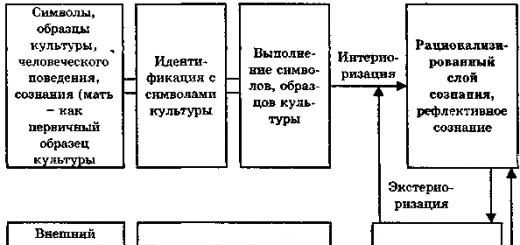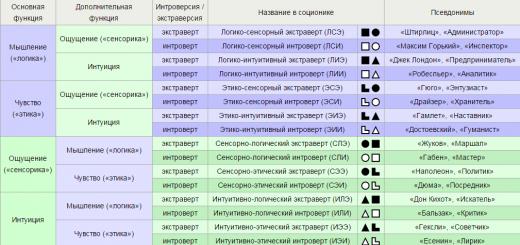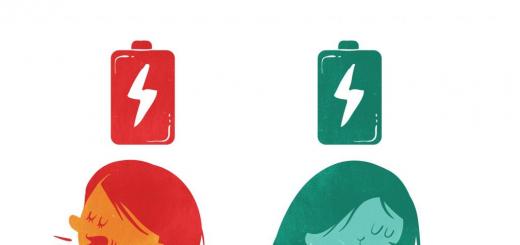Day of the sign language interpreter was established in January 2003 at the initiative of the Central Board of the All-Russian Society of the Deaf. The All-Russian Public Organization of the Disabled "All-Russian Society of the Deaf" (VOG) is the largest and oldest public organization of the hearing impaired in Russia, founded in 1926.
The purpose of the Day of the sign language interpreter is to draw public attention to the problems of the deaf. For comparison, if in Finland there are 300 sign language interpreters for every thousand deaf people, then in Russia there are only three. And over time, the number of sign language interpreters is only getting smaller. At the same time, the work of a sign language interpreter is invaluable in social terms for the deaf community, because he is needed in court, the police, the tax office, for social protection, at the doctor's office and so on.
Usually, sign language interpreters are children of deaf parents who grew up in a “deaf” environment. You can get an education in this specialty in the training centers of St. Petersburg and Moscow.
The language that sign language interpreters “speak” from the screen or with their clients is sign language, and several million people around the world communicate in it. In some countries, it has long been officially recognized and is used to adapt news programs and various programs for people with hearing problems.
By the way, on October 24, the State Duma of the Russian Federation in the first reading adopted a bill raising the status of Russian Sign Language. Thanks to amendments to the laws “On Education” and “On the Social Protection of Disabled Persons in the Russian Federation”, Russian Sign Language is now defined as the language of communication in the presence of hearing or speech impairments, including in the areas of oral use of the state language of the Russian Federation.
The special significance of this bill is that the official recognition of the status of Russian Sign Language will create the necessary conditions in educational institutions for the education of hearing impaired people using sign language, build a system of training and retraining of teachers on the basis of secondary and higher professional educational institutions, according to the website VOGinfo.ru.
How to communicate with a person in the language of the deaf?
sign language
First, one of the major misconceptions about sign languages is that they are dependent on or derived from spoken languages (sound and written) and that these languages were invented by hearers. This is not true. Secondly, dactyling of letters is often taken for sign languages - that is, when the letters are “depicted” by hands.
The difference between dactylology and sign language, which the deaf communicate with each other, is that dactylology is used mainly for pronouncing proper names, place names or specific terms, that is, each word is “showed” by hand spelling. At the same time, sign signs represent whole words, and in total there are more than 2000 gestures in the dictionary of the deaf. Show some of them will not be difficult.
For example:







You can learn more about sign language from a well-known book. G. L. Zaitseva“Gesture speech. Dactylology".
It is easier to get acquainted with the basics of dactylology - there is a well-established alphabet, and by spelling the word with gestures, you can communicate with a deaf person. There are 33 dactyl signs in Russian dactylology, each of which corresponds to the outline of the corresponding letter.
Russian dactyl alphabet from the site deafnet.ru:

Note that a deaf or hard of hearing person is likely to understand exactly what you want to say to him without sign language, because for the most part they read lips very well.
In our classes, we increasingly devoted time to the history of the creation of writing. But this time I wanted something different, more unusual and modern. So the idea came up to tell children about other languages. Already in the plans are:
Sign language;
- the language of spies;
- programming languages;
- Braille cipher.
Gestuno is the language of people with hearing impairments.
Deaf people communicate using gestures - quick hand movements accompanied by a lively facial expression. These gestures, like any other language, need to be learned. They quickly convey information to the interlocutor. Where hearing people need many words, for example: Shall we go across the bridge?, one gesture is enough for deaf people.
This possibility is also used where it is impossible to hear: under water by divers or in space by astronauts working outside the spacecraft.
International alphabet of gestures. Each language has its own system of naming letters or sounds.
Sign languages for the deaf and dumb vary from country to country. There are TV programs in which the text is "translated" for the deaf. Then, in the corner of the screen, you can see the announcer, who silently gesticulates, i.e. speaks in sign language.
There are more than 13 million deaf and hard of hearing people in Russia. The birth of a child with hearing impairment in the family is a difficult test both for parents and for the child himself, who needs special teaching aids and, most importantly, communication with peers and relatives. Fortunately, the Russian Society of the Deaf is actively working on this front. Thanks to the activities of its branches, people with hearing impairments unite and communicate with each other without feeling excluded from the social process.
There are also problems: the lack of educational institutions that accept people with hearing impairments, the lack of sign language interpreters and teaching aids that allow them to master sign language.
Russian Sign Language is an independent language unit used for communication by people with hearing impairments.
Sign language does not consist only of a static figure shown by hands - it also contains a dynamic component (the hands move in a certain way and are in a certain position relative to the face) and a mimic component (the speaker's facial expression illustrates the gesture). Also, during a conversation in gestuno, it is customary to "pronounce" words with your lips.
In addition to this, when communicating with people with hearing impairments, you should be extremely attentive to your posture and involuntary hand gestures - they can be misinterpreted.
The basis of sign language is the dactyl (finger) alphabet. Each letter of the Russian language corresponds to a certain gesture (see picture).
Knowing this alphabet will help at first to overcome the "language barrier" between you and a person with hearing impairments. But Dactyling (spelling) is rarely used by the deaf in everyday speech. Its main purpose is to pronounce proper names, as well as terms for which their own gesture has not yet been formed.
For most words in Russian Sign Language, there is a gesture that denotes the whole word. At the same time, I want to note that almost all gestures are intuitive and very logical. For example:
"Writing" - we kind of take a pen and write on the palm of our hand. "Count" - we begin to bend our fingers. "Grandfather" - very reminiscent of a beard, right? Sometimes in gestures for complex concepts, you simply marvel at how accurately the essence of the subject is noticed.
The structure of sign language is not complicated at all. The word order corresponds to the usual sentences of the Russian language. For prepositions and conjunctions of one letter, their dactyl gesture (a letter from the alphabet) is used. Verbs are not conjugated or declined. To indicate time, it is enough to give a marker word (Yesterday, Tomorrow, 2 days ago) or put the gesture "was" before the verb.
Like any other language, Russian sign language is very lively, it changes all the time and varies greatly from region to region. Manuals and training materials are updated at a snail's pace. Therefore, the recent publication of a primer for children with hearing impairments has become a real event.
The basic gestures with which you can communicate with deaf people are quite elementary:
The main difficulty is not even in mastering gestures, but in learning to "read" them from the hands. Gestures are complex - they consist of several positions of the brush, following one after another. And out of habit it is difficult to separate the end of one gesture and the beginning of another. Therefore, learning gestuno takes no less time than learning any foreign language, and maybe more.
We often see people with hearing impairments in the subway and on the street, in cafes. These are cheerful, shining people, completely ordinary, just having other ways of communicating. Deafness does not prevent them from being happy - having friends, a favorite job and a family. They can even sing in tin and dance - yes, yes, people with hearing impairments still hear music,
This post has been brewing for a little over six months. And finally, I got around to finishing it and summing it up.
There are more than 13 million deaf and hard of hearing people in Russia. The birth of a child with hearing impairment in the family is a difficult test both for parents and for the child himself, who needs special teaching aids and, most importantly, communication with peers and relatives. Fortunately, the Russian Society of the Deaf is actively working on this front. Thanks to the activities of its branches, people with hearing impairments unite and communicate with each other without feeling excluded from the social process.
There are also problems: the lack of educational institutions that accept people with hearing impairments, the lack of sign language interpreters and teaching aids that allow them to master sign language.
The idea to learn Russian sign language and help as a sign language interpreter came to me a long time ago. But since then and to this day, I can not find the time. Materials have already been found, all the necessary information has been obtained, but there is still no time. Well, okay, let's start small - with the primary educational program, so to speak.
Russian Sign Language is an independent language unit used for communication by people with hearing impairments.
Sign language does not consist only of a static figure shown by hands - it also contains a dynamic component (the hands move in a certain way and are in a certain position relative to the face) and a mimic component (the speaker's facial expression illustrates the gesture). Also, during a conversation in gestuno, it is customary to "pronounce" words with your lips.
In addition to this, when communicating with people with hearing impairments, you should be extremely attentive to your posture and involuntary hand gestures - they can be misinterpreted.
The basis of sign language is the dactyl (finger) alphabet. Each letter of the Russian language corresponds to a certain gesture (see picture).
Knowing this alphabet will help at first to overcome the "language barrier" between you and a person with hearing impairments. But Dactyling (spelling) is rarely used by the deaf in everyday speech. Its main purpose is to pronounce proper names, as well as terms for which their own gesture has not yet been formed.
For most words in Russian Sign Language, there is a gesture that denotes the whole word. At the same time, I want to note that almost all gestures are intuitive and very logical. For example: 
"Writing" - we kind of take a pen and write on the palm of our hand. "Count" - we begin to bend our fingers. "Grandfather" - very reminiscent of a beard, right? Sometimes in gestures for complex concepts, you simply marvel at how accurately the essence of the subject is noticed.
The structure of sign language is not complicated at all. The word order corresponds to the usual sentences of the Russian language. For prepositions and conjunctions of one letter, their dactyl gesture (a letter from the alphabet) is used. Verbs are not conjugated or declined. To indicate time, it is enough to give a marker word (Yesterday, Tomorrow, 2 days ago) or put the gesture "was" before the verb.
Like any other language, Russian sign language is very lively, it changes all the time and varies greatly from region to region. Manuals and training materials are updated at a snail's pace. Therefore, the recent publication of a primer for children with hearing impairments has become a real event.
The basic gestures with which you can communicate with deaf people are quite elementary: 
Forgive me for the handicraft execution, I literally made the plate "on my knee" based on the materials of the 1980 textbook. I note that the word "I" is often shown with the letter I from the alphabet.
But the main difficulty lies not even in the basis of gestures, but in learning to "read" them from the hands. At first, I had to face the fact that gestures are complex - they consist of several brush positions following one after another. And out of habit, it’s damned difficult to separate the end of one gesture and the beginning of another. Therefore, learning zhestuno, in my opinion, will take no less time than learning any foreign language, and maybe more.
The materials on the study of gestuno, which I managed to find on the net, are rather scarce. However:
1. Textbook "Learning gestuno" 1980 edition
2. Dictionary of gestures, approximately the same age as the textbook
3. Training on the knowledge of letters - they show you a gesture, you enter a letter. Entered incorrectly - the face is upset.
5. Relatively new video tutorial on Russian sign language. Archived into a five-part multi-volume archive. The password for the archives (it was apparently set by the author of the manual) is wonderful - Balrog. Attention: the manual does not open on 64-bit Windows =(
Piece 1
Piece 2
Piece 3
Piece 4
Piece 5
6. Translation review literature on the meaning of gestures and facial expressions
All materials for safety were re-uploaded by me to Yandex and also duplicated on the hard disk. On the net, you never know if you can find this or that book again.
Well, in conclusion, I want to say one more thing. I often see people with hearing impairments in the subway and on the street, in cafes. These are cheerful, shining people, completely ordinary, just having other ways of communicating. Deafness does not prevent them from being happy - having friends, a favorite job and a family. They can even sing and dance on zhestuno - yes, yes, people with hearing impairments still hear music, perceiving its wave vibrations.
But at the same time, the thought does not leave me that simply by mastering a couple of gestures, society can make their life much easier and more convenient. I will think, if I do take up the study of gestuno and it does not annoy the friends too much, gradually publish simple phrases in gestuno for everyday use - so that they can be studied and applied if necessary.
It all started again with the series. Although, to be completely accurate, then from a beautiful interior. I was looking for series with interiors from Greg Grande, the same one who was the artist on .
So I came across the series "They were mixed up in the hospital."
It is about two girls who were mistakenly confused by doctors in the maternity hospital, and the families found out about it only when the daughters were 16 years old. This is where the series begins, and then everything seems to be as usual: first love, conflicts with parents, disputes between the parents themselves, rivalry at school, parting and trying on. Oh yes, all this in beautiful interiors.
The trick is that one of the main characters is deaf.
She became deaf after an illness at the age of two and now wears a hearing aid, goes to a school for the deaf and speaks sign language. And the plot twists around it too.
I became seriously interested when I started watching interviews with actors and found out that some of the actors are really deaf.
Actress Cathy Leclerc, who plays the title character, has Ménière's disease, whose syndromes include hearing loss and dizziness. The disease does not prevent her from working, but it helps to talk about this diagnosis in an interview and more people go to the doctors to get tested.
Even at school, Kathy learned sign language. Imagine, in the States, you can easily choose a sign language as a second language for learning.

One of the episodes of the series is filmed entirely in sign language, not a single word is used in it. At the very beginning, the two main actresses appear, who warn the audience, they say, do not worry, everything is in order with your TV, but some of the scenes will be filmed in complete silence.
This is so cool! Talk about people with special needs, not through short commercials or tear-jerking speeches.
I watched the series and realized that people with disabilities are not only the people we imagine in wheelchairs.
Oh, this stereotype, firmly settled in my head thanks to the sign on the windows of cars and on the pavement of parking lots.
And so I ran into a deaf company at a crossroads. I remembered that at the age of eight I myself suffered a serious otitis media with the risk of losing part of my hearing. The organizers of the event, who invited me as a speaker, asked me to speak louder, as there was a participant with a hearing aid in the hall.
It felt like the universe was desperately hinting to me, “Would you like to learn sign language?”
I entered into the search "training in sign language" and very quickly found in St. Petersburg school of sign language "Image". The school is located on the territory of the Herzen Pedagogical University, which means that at least twice a week I find myself in the very center of the city.


The university campus that I need to completely cross - from the checkpoint with a strict security guard to building 20, our teacher Denis Aleksandrovich - “So, you already learn these gestures at home, now there is no time to spend on this” (in fact, he is very cool!) - all this brings me back to the nostalgia for the student past.
Training twice a week for two months. This is an express course, the regular course lasts four months. The session goes on for an hour and a half. What you need to learn something new and not get tired. And most importantly - no sportswear hated by me in a bag, changing clothes and showering in open booths. In general, one hundred thousand five hundred times better than sports.
There are many students in the group. One of my classmates born in 2000. Imagine! I thought they were still somewhere in kindergarten, but they are already in higher educational institutions. It's hard for me to believe this. But there are also older students like me.
Most of my classmates ended up in class for the same reason I did. Interesting.
Only a few classes have passed, and I can already tell about myself, what my name is, what I do, how old I am and what year I was born. I can talk about my family and keep the conversation going: “Do you have a dog?” "No, I don't have a dog, I have a cat."
It's funny, but incredibly exciting.


Some interesting things about sign language
- The sign language in different countries is different, in our country it is Russian Sign Language (RSL). For some reason, this is terribly disappointing for everyone, so, they say, they could agree on one language and they would have super-strength.
- Dactylology is a form of speech where each letter is transmitted as a sign, but it is not a sign language. For example, you can dactylize a name or a foreign word for which there is no sign yet.
- Deaf people read lips, so it is important for them to see not only the hands that show gestures, but also the lips that pronounce words.
- Sign language has a different grammar and therefore uses a different word order. For example, a question word is always placed at the end of a sentence.
- A sign language is not a tracing-paper from a real language, but a full-fledged language with its own linguistic features, structure, and grammar. In sign language, the form of the sign is important, its localization (the same gesture at the forehead and at the chest means different things), the nature of the movement and the non-manual component (facial expressions, turn of the body, head).
What I like most about my studies is that for the first time I try not to be an excellent student.
There is no need to write down anything in the lessons - I put the notebook out of my bag after the first meeting. Yes, there are homework assignments, but I don't always do them. No grades or tests. I remember well what they say in class and that's enough for me.










